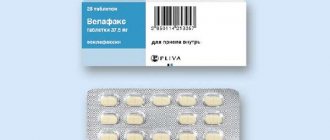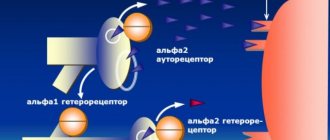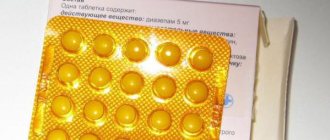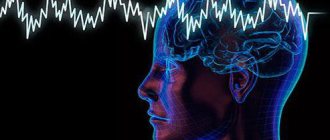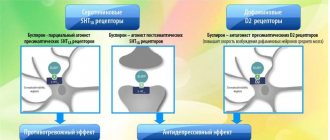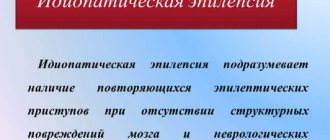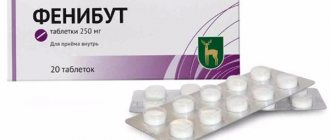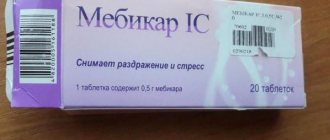pharmachologic effect
The abstract indicates that Phezam is a combined agent that provides nootropic, antihypoxic and vasodilating effects. There is a mutual potentiation of a decrease in cerebral vascular resistance, improving blood flow in these vessels.
As Wikipedia informs, the therapeutic effect and its mechanism are determined by the main active substances that are part of the drug Phezam. The main effect observed after taking the medicine is improvement of blood circulation in the brain and metabolic processes in nerve fibers and brain cells.
The substance piracetam has a nootropic effect, activating brain activity and positively affecting metabolism in the body. Under the influence of the substance, the rate of consumption of glucose, which is the main nutrient for the brain, increases. Thus, under the influence of piracetam, more active nutrition of cells occurs, which leads to the production of more energy and activation of brain function. Piracetam helps increase the speed of impulse transmission between neurons. As a result, memory increases, concentration improves, which leads to increased intellectual function.
Piracetam also helps improve blood flow in those areas of the brain where there are damaged vessels, and ischemia , that is, oxygen starvation. Since microcirculation improves, ischemic zones that arise due to lack of oxygen disappear, and the entire volume of neurons participates in brain function.
In addition, there is an indirect effect of this component, which helps to activate blood flow. It is ensured by inhibiting the process of platelet adhesion, which essentially prevents the formation of blood clots. That is, the piracetam component not only activates blood flow, but also improves its properties. Thus, blood circulates more actively through microvessels.
hypoxia increases . Piracetam improves the integrative function of the brain, activates intellectual work, facilitates the process of assimilation of new material, and ensures restoration and support of brain functions in older people.
The substance cinnarizine has a pronounced effect directly on the blood vessels of the brain, dilating them. Also, under the influence of this substance, the tone of smooth muscles decreases, their response to active substances that constrict blood vessels decreases. Due to the fact that the substance dilates blood vessels, blood flow is activated, and more oxygen and nutrients enter the brain. Due to improved blood flow, the resistance of brain tissue to oxygen deficiency also increases. Moreover, despite the vasodilating effect, cinnarizine does not affect blood pressure and intracranial pressure .
The presence of these two components in Phezam simultaneously ensures a mutual enhancement of the effects of the active components. Consequently, the severity of the effect of the drug is more pronounced compared to taking these components separately.
When taking Phezam, there is a predominance of the sedative effect of cinnarizine, from which the medicine does not lead to the manifestation of psychomotor agitation, as happens when taking piracetam.
Proper storage
If you follow the principles of proper storage, the effect of the substances included in Phezam will not be changed. The medication should be stored in a place protected from sunlight with a low degree of humidity. The temperature regime is recommended up to 25 degrees, but not lower than 15.
The shelf life when properly stored is three years.
The medication has managed to establish itself in the pharmaceutical market, but in practice it has mixed reviews from doctors and patients using this drug.
The majority of citizens, namely approximately 65-70%, consider Phezam a good remedy. It had a positive effect on the progress of their therapy to eliminate various diseases. Some patients (about 30%) note the development of drowsiness from using the drug, and the occurrence of allergic reactions to the components of Phezam.
To achieve the most beneficial effect of the drug, you must follow the dosage prescribed by the doctor, as well as complete the course of treatment to eliminate the disease.
Pharmacokinetics and pharmacodynamics
After the patient has taken Phezam tablets orally, the active substances are completely absorbed from the gastrointestinal tract.
The highest concentration of piracetam in plasma is observed after 2-6 hours, cinnarizine - after 1-4 hours. The bioavailability level of piracetam is 100%.
Piracetam does not bind to plasma proteins, cinnarizine binds 91%. Penetrates the BBB, is detected in all tissues and organs, and passes through the placental barrier. Its selective accumulation in the cerebral cortex is noted.
The substance piracetam is not metabolized, the metabolism of cinnarizine occurs in the liver.
The half-life of piracetam is 4-5 hours (from the blood), 8.5 hours (from the cerebrospinal fluid). Mainly excreted through the kidneys.
The half-life of cinnarizine is 4 hours. Metabolites are excreted mostly in the urine and also in feces.
In people with renal failure, the half-life of piracetam is increased.
Indications for use of Phezam
Before using the medicine Phezam, the indications for use should be taken into account. The drug is prescribed in the following cases:
- with insufficiency of blood flow in the brain (in the case of vascular atherosclerosis , during the recovery period after an ischemic or hemorrhagic stroke , with encephalopathy of various origins, after a TBI);
- in case of intoxication ;
- in diseases of the central nervous system, in which there is a decrease in intellectual-mnestic functions, that is, deterioration of attention, memory, mood;
- with psychoorganic syndrome, in which signs of asthenia and adynamia ;
- consequences of traumatic brain injury;
- labyrinthopathy (tinnitus, dizziness, nausea and vomiting);
- asthenic syndrome associated with psychogenic origin;
- Meniere's syndrome;
- for the purpose of preventing migraine , kinetosis ;
- in the complex therapy of children who have a psychoorganic syndrome, which has led to low learning ability.
Classification
Based on the nature of their pronounced pharmacological action, there are 2 main groups of these drugs:
- 10-alkyl derivatives (neuroleptic, sedative and antiallergic effect);
- 10-acyl derivatives (used in the treatment of cardiovascular diseases).
Alkyl derivatives of phenothiazine include Promazine, Promethazine, Chlorpromazine, Levomepromazine, Trifluoperazine. They have a lipophilic group with a tertiary nitrogen at position 10 (see structural diagram above). Acyl-derivatives include “Moracizin” and “Etacizin”, which contain a carboxyl group in the structure of the active molecules.
There is also another classification - according to the nature of the radicals of nitrogen atoms. A comparative description of the action of phenothiazine derivatives and their distribution according to this criterion is given in the table below.
| Group of derivatives | Main pharmacological effect | Typical representative | Frequency of side effects |
| Aliphatic | Moderate antipsychotic and sedative | Chlorpromazine | Moderate |
| Piperazine | Strong antipsychotic, antiemetic, moderate antidepressant, activating | Trifluoperazine | High |
| Piperidine | Moderate antipsychotic, sedative, anti-anxiety, behavior corrective | Thioridazine | Low |
Among the new generation drugs the following can be distinguished:
- antidepressants (“Fluoroacyzin”);
- agents that dilate coronary vessels (“Nonachlazin”);
- antiarrhythmic drugs (“Etatsizin”, “EThiethylperazine”).
Contraindications
Phezam should not be taken in the following cases:
- in severe forms of renal and liver failure;
- during periods of increased psychomotor agitation;
- with Huntington's chorea ;
- during pregnancy and breastfeeding;
- when the patient is under 5 years of age;
- with high sensitivity to the components of the product.
The medicine is prescribed with caution to those patients who have been diagnosed with Parkinson's disease , hemostasis , liver or kidney dysfunction, and severe bleeding .
Side effects of Phezam
The following side effects are possible during treatment:
- nervous system: nervousness, feeling of drowsiness, hyperkinesia; in rare cases - headaches, dizziness , insomnia , ataxia , agitation, anxiety;
- allergic manifestations: in rare cases - skin rash, dermatitis , swelling, itching, photosensitivity.
- digestive system: severe salivation, nausea, vomiting, abdominal pain, diarrhea ;
- other manifestations: increased libido.
Overdose
If the permissible dose of the drug is exceeded, the manifestation of side effects increases. Overdose occurs in isolated cases and is expressed:
- diarrhea with blood;
- vomiting;
- tremor of the limbs;
- decrease in blood pressure.
Children experience insomnia, irritability, trembling of arms and legs.
If there is an overdose of the drug, you must:
- provide first aid: gastric lavage, use of absorbents;
- in severe cases, the kidneys and liver are cleansed in medical institutions.
Phezam tablets, instructions for use (Method and dosage)
The instructions for using Phezam, which are provided in the annotation for the drug, indicate that the medicine should be taken 1-2 capsules three times a day for one to three months. The duration of treatment depends on the severity of the disease. The drug is usually taken in courses - 2-3 courses annually.
Children over 5 years old are advised to take 1-2 capsules 1-2 times a day. Capsules are used for one and a half to three months. Capsules should be taken by swallowing them whole, without violating the integrity of the capsule. You should take the tablet with half a glass of water, and it should not be hot.
Many users ask about capsules, how to take them - before or after meals. The instructions say that there is no particular difference in whether to take the product before or after meals. But it is optimal to drink capsules 20-30 minutes after eating. It is advisable to take the medicine at the same time every day.
Doctors warn that you cannot take the medicine for longer than 3 months - a break is necessary between courses.
Toxicology
As with other psychotropic drugs, phenothiazine derivatives also exhibit side and toxic effects. Toxicological chemistry describes a large number of poisonings, which often occur when combined with other drugs (antibiotics, insulin, barbiturates and others). Taking these drugs in large doses can be fatal.
These substances can accumulate in the human body. Therapeutic doses are excreted slowly (for example, Aminazine at a dosage of 50 mg/day is excreted within 3 weeks). The nature of poisoning with drugs containing phenothiazine derivatives depends on age, gender, dose and does not have specific symptoms. After death, these compounds and their metabolites can persist in the human body for 3 months. Diagnosis of poisoned patients is carried out using urine and blood tests.
Quantitative determination of derivatives is carried out by several methods:
- acid-base titration;
- cerimetry (redox titration using cerium);
- spectrophotometric method (used for the analysis of factory-produced drugs);
- Kjeldahl method;
- iodometry;
- photocolorimetric method;
- gravimetry;
- indirect complexometric titration.
Interaction
Not all medications can be taken with Phezam tablets at the same time, so the interaction of this medication with other medications should be taken into account.
When taken simultaneously with Phezam, drugs that depress the action of the central nervous system, ethanol, tricyclic antidepressants, their sedative effect may increase.
When taking Phezam, the effect of nootropic and antihypertensive drugs is potentiated.
Vasodilator medications enhance the effect of Phezam.
Due to the presence of cinnarizine in the drug, the activity of hypertensive drugs .
When taking Phezam simultaneously, there is an increase in the activity of thyroid hormones, which can lead to tremor and anxiety.
Due to the antihistamine effect, cinnarizine can mask the manifestation of positive reactions in relation to factors of skin reactivity during skin tests. To avoid this effect, you must stop using the medication 4 days before such tests.
Phezam may enhance the effect of oral anticoagulants.
Physicochemical characteristics
The main properties of these compounds are:
- Appearance – white crystalline powders (some with a creamy tint), odorless.
- Hygroscopic (absorb moisture from the air).
- Good solubility in water, alcohols, chloroform. The compounds are insoluble in ether and benzene.
- Fast oxidation. In this case, the radical can be split off, sulfoxides, nitric acid and other substances are formed. The process is accelerated by exposure to light. In chemistry, sulfuric acid, potassium bromate or iodate, bromine water, hydrogen peroxide, chloramine and other reagents are used to oxidize these compounds.
- The oxidation products of derivatives are highly soluble in organic solvents. They are painted in bright colors (red-pink, yellow-pink, lilac). This property is used for the detection and quantification of phenothiazine drugs as well as their metabolites in various biological fluids.
- Manifestation of basic properties. When reacting with acids, they form salts that have the same solubility properties.
- In the light, these substances and their solutions may acquire a pinkish color.
Phenothiazine derivatives do not occur in nature. They are obtained synthetically by extraction with organic solvents from alkaline aqueous solutions. Medicines are stored in a dry place, protected from light, tightly sealed (to protect against oxidation).
special instructions
If Fezam is prescribed to patients with impaired liver function, liver enzyme levels should be monitored.
The medicine activates the functions of thyroid hormones, which is why patients undergoing treatment may experience anxiety and tremors.
Since cinnarizine can cause drowsiness, during treatment you should drive carefully and work with precise and dangerous machinery.
When treating elderly people, it is necessary to regularly monitor kidney function indicators and, if necessary, adjust the dose.
Active components are able to penetrate the filter membranes of hemodialysis .
The medication should be avoided in case of porphyria .
When taking Phezam, a false positive result may occur during doping control in athletes; also, due to the presence of iodine-containing dyes in the capsule shell, a false positive result may occur in a test for the determination of radioactive iodine.
Since piracetam reduces platelet , it should be prescribed with caution when hemostasis is impaired in patients, as well as in conditions accompanied by hemorrhages. You should not take the medicine during complex surgical operations, with severe bleeding and a history of hemorrhagic strokes.
Phezam can provoke irritation in the epigastric region; when used after meals, a decrease in the severity of gastric irritation may be observed, for which purpose the medicine should be used with caution in patients suffering from gastrointestinal diseases.
lactose as an auxiliary component .
Aliphatic derivatives
Aliphatic phenothiazine derivatives include drugs such as:
- Chlorpromazine hydrochloride (trade names - “Largactil”, “Aminazine”, “Plegomazine”).
- Levomepromazine (“Methotrimeprazine”, “Tizercin”, “Nozinan”).
- Alimemazine (“Teralen”, “Teraligen”).
- Piportil (“Pipothiazine”).
- Propazine ("Promazine").
One of the most widely used drugs in this group is Chlorpromazine. It has the following effect:
- antipsychotic (reduces delusions, hallucinations in patients with schizophrenia, reduces aggressiveness);
- sedative (elimination of affect, reduction of motor activity, relief of acute psychosis);
- sleeping pills (in large doses);
- anxiolytic (reduction of fear, anxiety, tension);
- antiemetic (sometimes used to relieve severe vomiting);
- antiallergic (blocking histamine receptors);
- muscle relaxant (muscle relaxation);
- hypothermic (decrease in body temperature due to suppression of the thermoregulation center in the hypothalamus);
- increased anesthesia, sleeping pills and other drugs that depress the central nervous system.
Phezam's analogs
Level 4 ATX code matches:
Bravinton
Acefen
Carnicetine
Pyracesin
Nooclerin
Semax
Piracetam
Aminalon
Olatropil
Vinpocetine
Cerebrocurin
Cavinton Forte
Calcium Hopanthenate
Cephabol
Cerebrolysate
Pramistar
Sidnocarb
Vinpotropil
Glycine Ozone
Glycine VIS
Both Fezam and its analogues should be prescribed by a doctor after an accurate diagnosis. Active components similar to those contained in the drug Phezam are found in the drugs Combitropil , Piracezin , Omaron , NooKam . The price of analogues depends on the manufacturer of the drug and its packaging.
Medicines also have a similar pharmacological effect on the patient’s body: Acefen , Vinpocetine , Demanol , Memotropil , Combitropil , Pantogam , Pyriditol , Cellex , Encephabol , etc.
Omaron or Fezam - which is better?
Omaron drug and has the same indications for use, contraindications and causes similar side effects. At the same time, the price of the drug Omaron is lower compared to Fezam.
Piracetam or Fezam: which is better?
Piracetam is an analogue of Phezam. Despite its easy tolerability, in some cases doctors avoid prescribing it. Thus, often the action in its pure form causes nervous tension and increases insomnia in people prone to nervous disorders. Not applicable if you have epilepsy.
Sometimes one doctor prescribes piracetam to a patient, and another prescribes cinnarizine. What can replace them in such a situation? Precisely Fezam. The influence of the two components will be more balanced and gentle on the body.
Reviews of Fezam
Most often, reviews about Phezam on forums are positive, they talk about improving the condition of patients when taking this medicine. Users write that after taking it, memory normalizes, attention and performance improve. Also, under the influence of the drug, stress and anxiety are reduced.
Similar positive reviews appear when capsules are used for children.
On forums where the drug Phezam is discussed, reviews from doctors are also often positive. However, there are also negative comments that the drug causes drowsiness, as well as the lack of positive effects during treatment.
Phezam price, where to buy
The price of Phezam tablets in Moscow is on average 250 rubles for 50 pieces. You can buy them at any pharmacy with a doctor's prescription. The price of Phezam in Ukraine (Kyiv, Kharkov, etc.) is from 70 UAH. per pack 60 capsules.
- Online pharmacies in RussiaRussia
- Online pharmacies in UkraineUkraine
- Online pharmacies in KazakhstanKazakhstan
ZdravCity
- Fezam capsules 400mg+25mg 60 pcs.Balkanpharma/Zdravle HFZ
283 rub.order
Pharmacy Dialogue
- Phezam (cap. No. 60)Zdravlje
RUB 293 order
- Phezam (caps. No. 60) ZiO-Zdorovye CJSC
RUB 299 order
- Phezam (caps. No. 60)Balkanpharma
RUB 301 order
Europharm* 4% discount using promo code medside11
- Phezam 60 capsZdravle HFZ JSC
360 rub. order
show more
Pharmacy24
- Phezam No. 60 capsules Pharmaceutical and Chemical Industry, Zdravle AT, Serbia
199 UAH.order
PaniPharmacy
- Phezam capsule Phezam capsules No. 60 Bulgaria, Balkanpharma-Dupnitza
223 UAH order
show more
Description of the dosage form, composition
Phezam is a drug whose main function is to improve blood circulation in the brain. It is used for the prevention of disorders of brain activity (atherosclerosis of blood vessels), strokes, with severe dementia of the vascular type, decreased attentiveness, Meniere's syndrome, and in childhood - with neurology.
Release form: capsules. Use internally.
The composition includes two active substances:
- Cinnarizine, 25 mg;
- Piracetam – 400 mg.
This proportionality indicates that one capsule contains 400 mg of Piracetam and 25 mg of Cinnarizine.
Additional components of the medication include:
- Lactose.
- Colloidal silicon dioxide.
- Magnesium stearate.
The Phezam capsule is cylindrical in shape and of sufficient density. Due to titanium dioxide it is painted white.
The active substance is in powder form inside a capsule.
On the domestic market, the medicine is sold from two main producing countries - Bulgaria and Serbia.
The capsules are sealed in cardboard packaging with the official logo and instructions for use inside. The package contains 60 capsules. The price of the medicine varies within 250 rubles.
Sold in pharmacies upon presentation of a doctor's prescription. Before using it, you must consult with a specialist who will prescribe a permissible acceptable dose and course of therapy.

